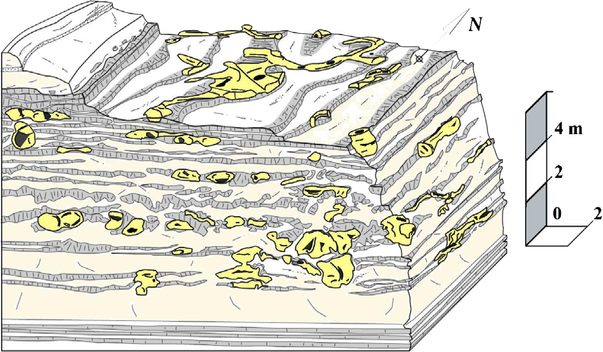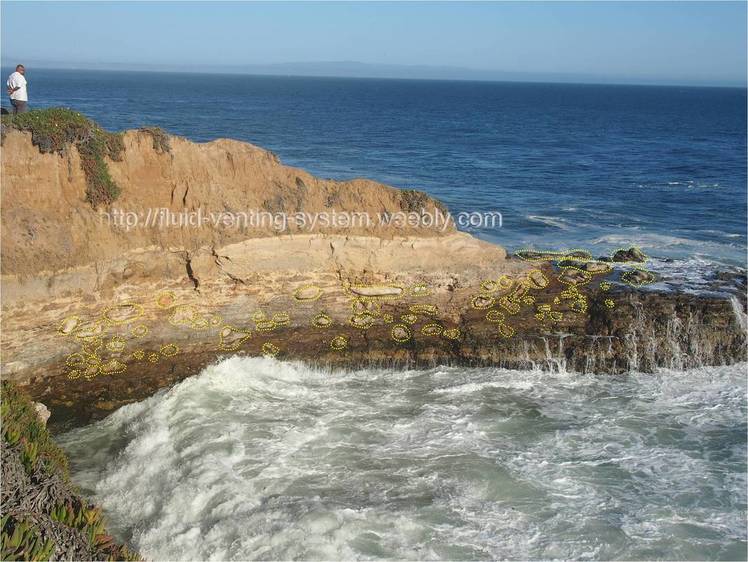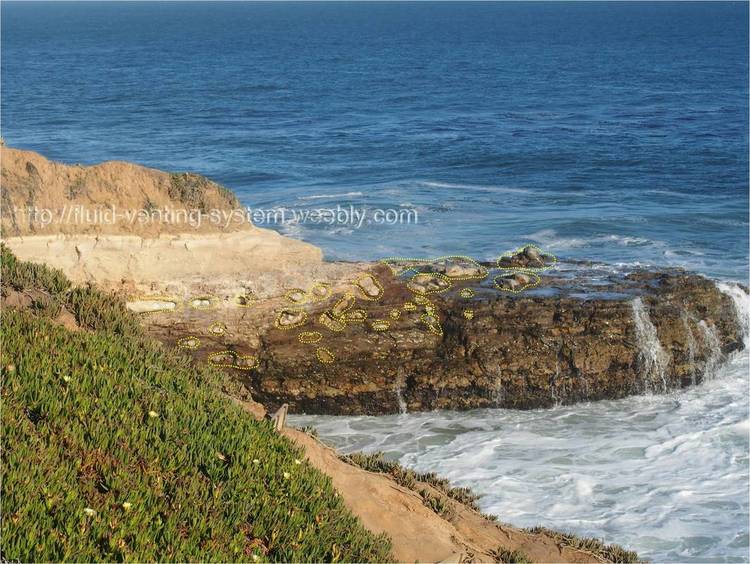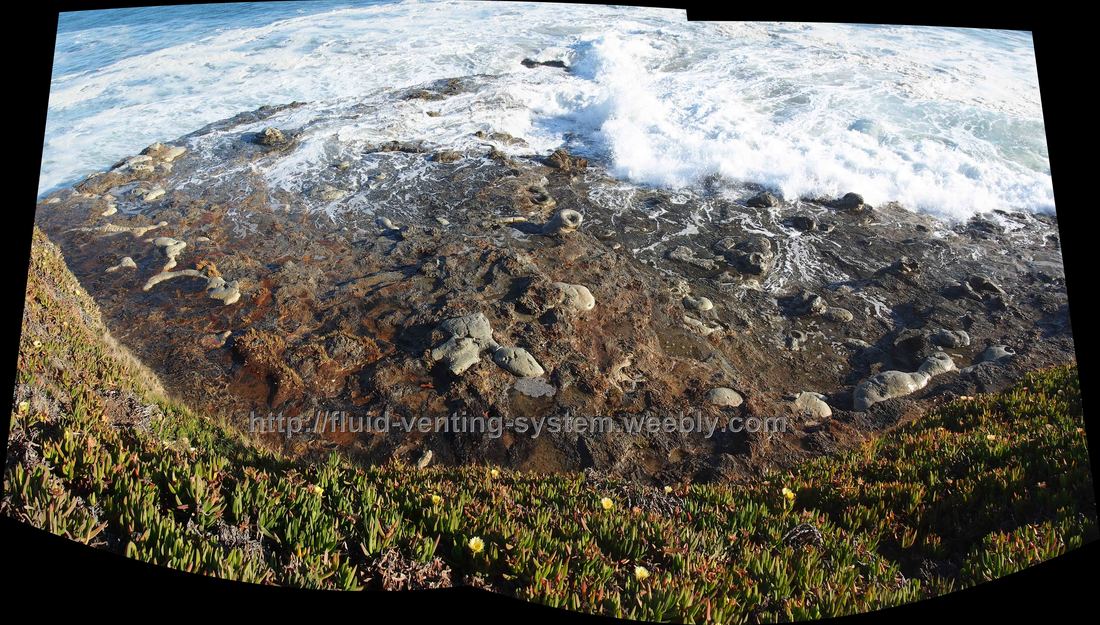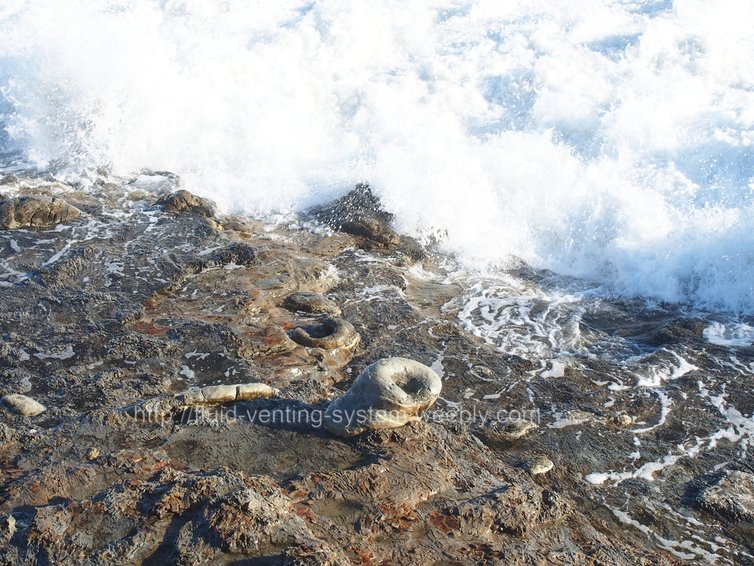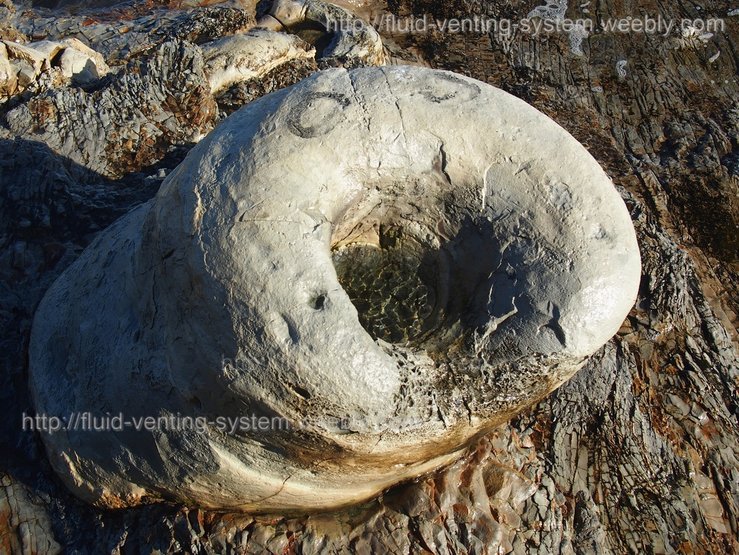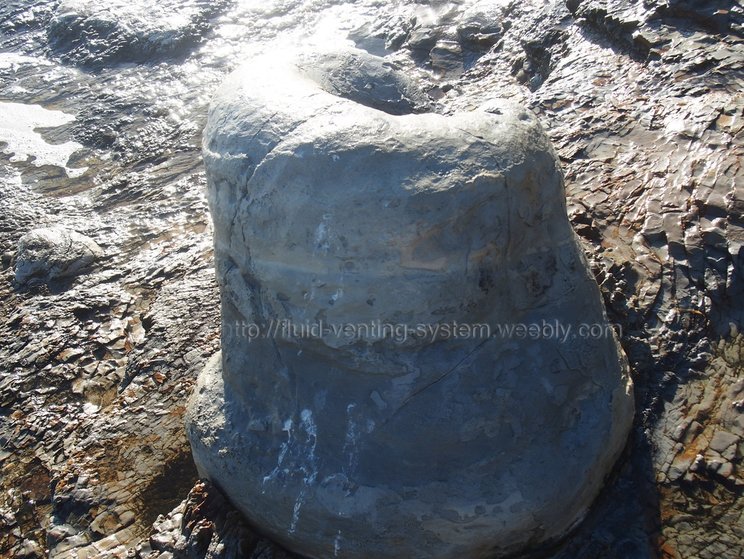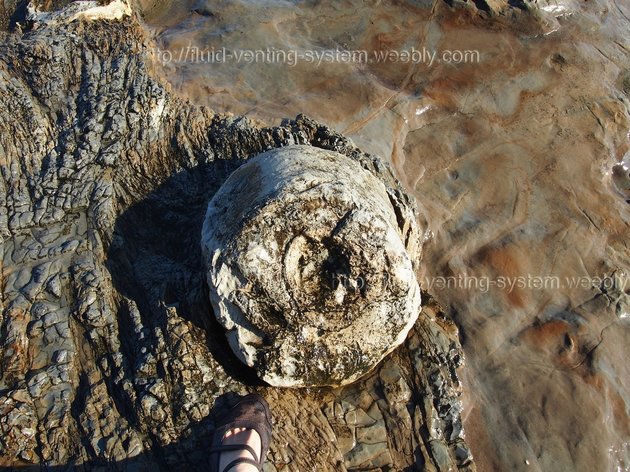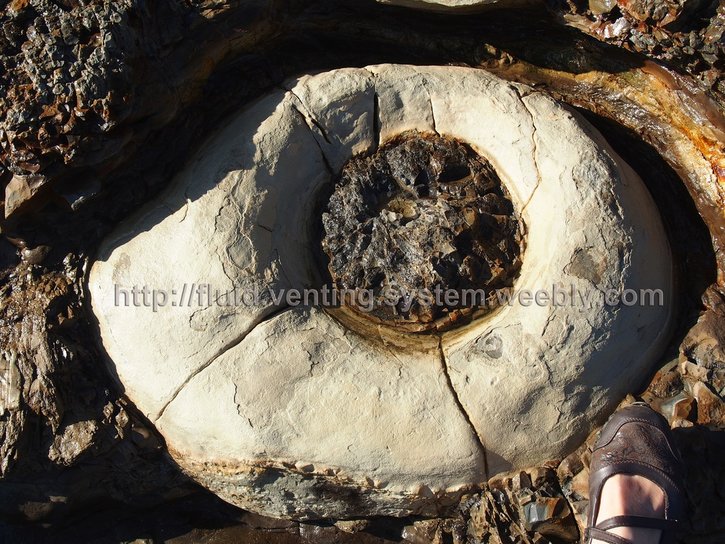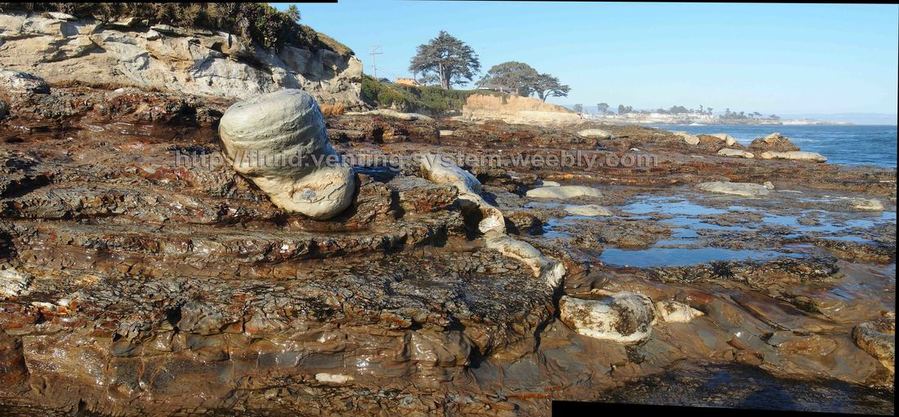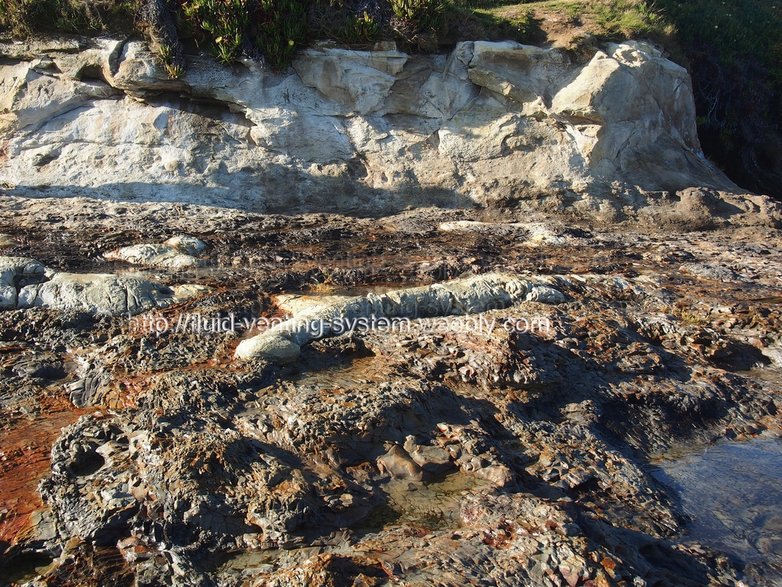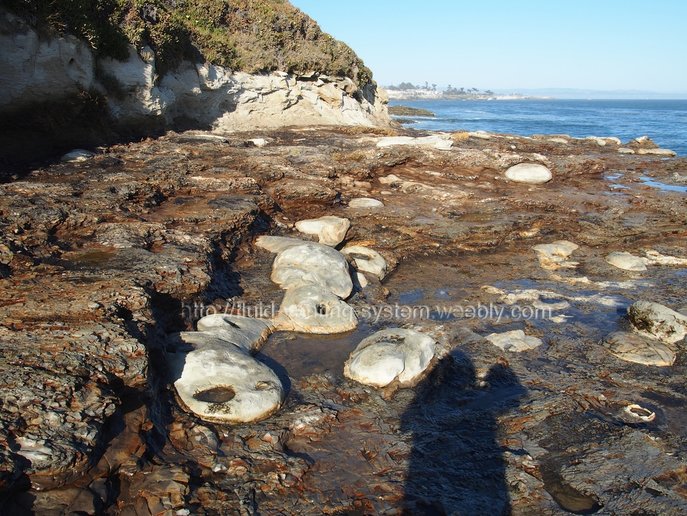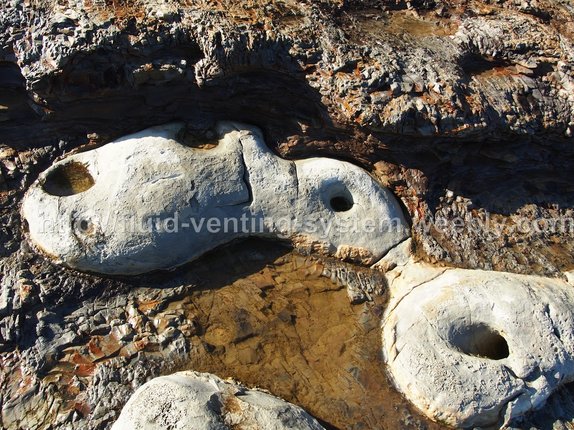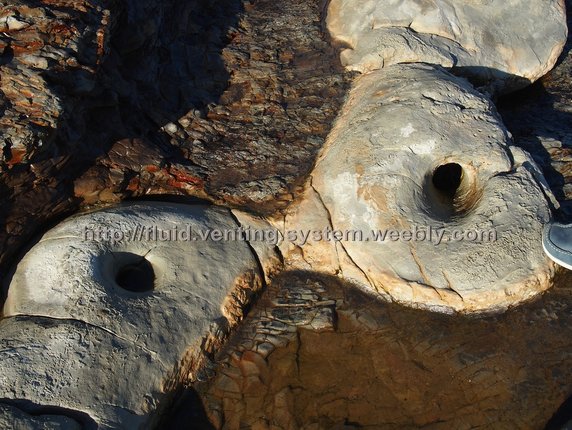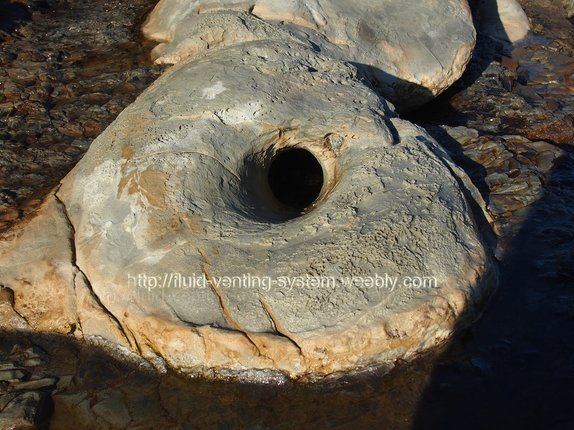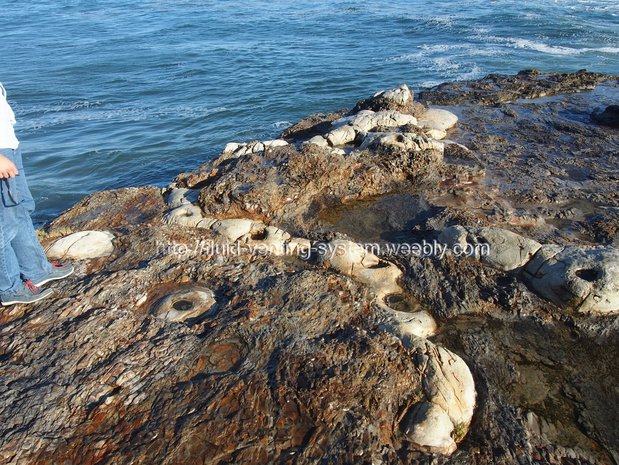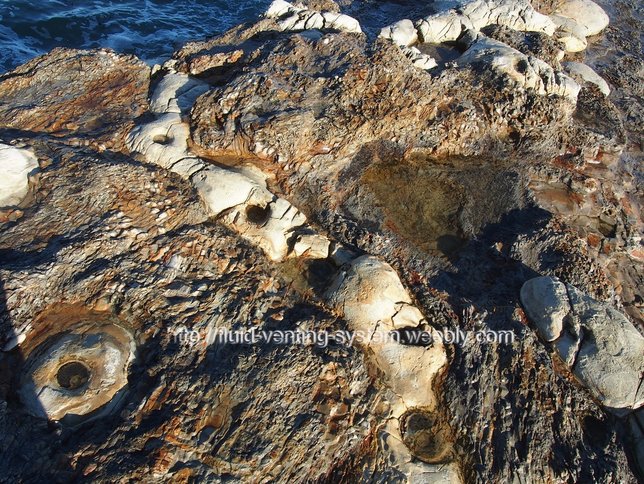Photo Gallery of Palaeo Gas Seepages of Ailleo (2005, et al., 2001)
‐ Western California Coast ‐
By Sutieng Ho and Jean-Philippe Blouet
Proofread by William Mackenzie
April 2017
Proofread by William Mackenzie
April 2017
Ailleo and co‐workers investigated a series of magnificent examples of fossilized gas conduits – cold seep carbonates which outcrop on a sea cliff of Monterey Bay on the western Californian coast in 2001 and 2005.
These seep carbonates have different morphologies that vary from cylindrical to irregular tubular forms (Aiello, 2005; et al., 2001). They are principally parallel to stratigraphic beds or sometimes cut across beds sub-vertically. Most of the fossilised gas conduits follow the trend of fracture networks and regional faults (Aiello, 2005, et al., 2001). Some of these fossil conduits connect to form local networks. Individual carbonate conduits often have diameters which vary from ten to several tens centimetres, and have lengths that range from less than a meter to several meters. The morphologies of these fossilised carbonate conduits are interpreted as being due to the leaking of gas through networks of fractures or faults inducing precipitation of cold‐seep carbonates along these zones of weakness (Aiello, 2005).
In this photo gallery, we share some pictures of these seep carbonates conduits which were photographed during our visit to the outcrop.
More information about Aiello’s (2005, et al., 2001) studies can be found in:
Aiello, I. W., Garrison, R. E., Moore, J. C., Kastner, M., & Stakes, D. S. (2001). Anatomy and origin of carbonate
structures in a Miocene cold‐seep field. Geology, 29(12), 1111‐1114.
Aiello, I. W. (2005). Fossil seep structures of the Monterey Bay region and tectonic/structural controls on fluid flow in an active transform margin. Palaeogeography, Palaeoclimatology, Palaeoecology, 227(1), 124‐142.

Fluid-Venting-System website by S. HO is licensed under a Creative Commons Attribution-NonCommercial-NoDerivatives 4.0 International License.

